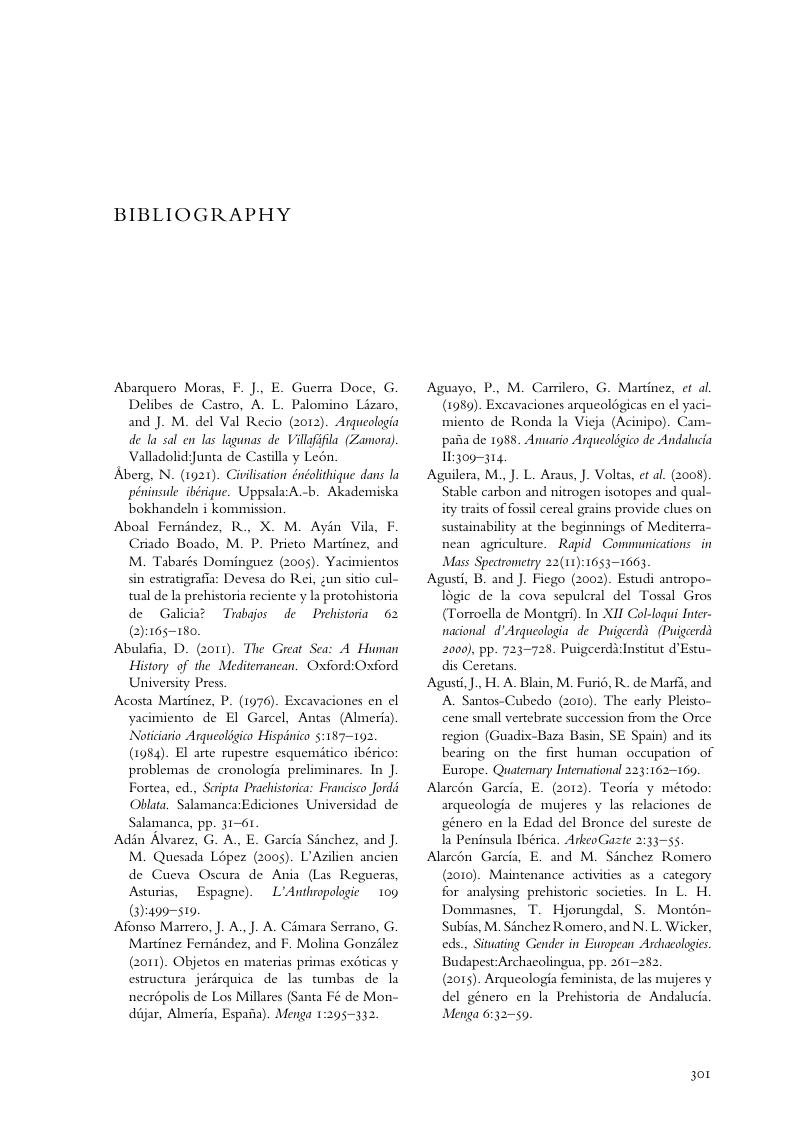Book contents
- The Archaeology of the Iberian Peninsula
- Cambridge World Archaeology
- The Archaeology of the Iberian Peninsula
- Copyright page
- Contents
- Preface
- Chapter 1 Setting the Stage:
- Chapter 2 The First Iberians and Last Neanderthals:
- Chapter 3 The First Modern Humans in Iberia:
- Chapter 4 The Creation of New Worlds:
- Chapter 5 The Expansion of Interregional Contacts:
- Chapter 6 The Emergence of Ranked Societies:
- Chapter 7 Archaeologies and Histories of the Iberian Past
- Bibliography
- Index
- References
Bibliography
Published online by Cambridge University Press: 19 November 2019
- The Archaeology of the Iberian Peninsula
- Cambridge World Archaeology
- The Archaeology of the Iberian Peninsula
- Copyright page
- Contents
- Preface
- Chapter 1 Setting the Stage:
- Chapter 2 The First Iberians and Last Neanderthals:
- Chapter 3 The First Modern Humans in Iberia:
- Chapter 4 The Creation of New Worlds:
- Chapter 5 The Expansion of Interregional Contacts:
- Chapter 6 The Emergence of Ranked Societies:
- Chapter 7 Archaeologies and Histories of the Iberian Past
- Bibliography
- Index
- References
Summary

- Type
- Chapter
- Information
- The Archaeology of the Iberian PeninsulaFrom the Paleolithic to the Bronze Age, pp. 301 - 374Publisher: Cambridge University PressPrint publication year: 2019



